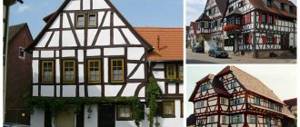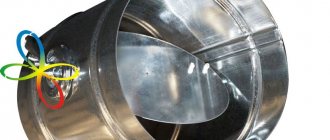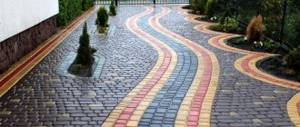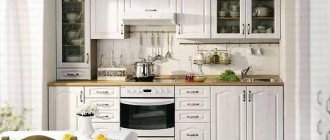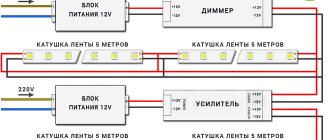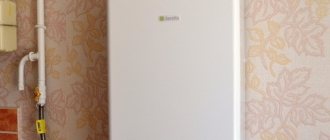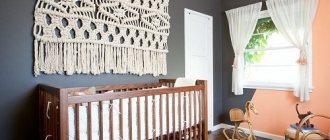If there are free rooms in your house or you are ready to free up any room for a swimming pool or a hydromassage pool, the space of the room allows, then keep in mind that the construction of swimming pools inside the house can be done in any room:
- Room;
- Ground floor;
- Attic;
- Annex.
An important factor when designing a swimming pool inside a house is:
- The strength of the foundation or the structure of the house itself;
- Ventilation equipment to avoid high humidity throughout the house;
- Heating system;
- Water supply system;
- Drain;
- Electrical supply.
If you want to avoid problems with the future pool, then before starting work, draw up a design for the future tank. Do not skimp on turning to specialists and order a project from professionals. Since, in addition to the basics of construction and other important characteristics, there are still a huge number of nuances that you simply cannot foresee. Specialists will help you with architecture, design of the pool bowl, as well as with the supply of all necessary communications.
If at least one factor is missing, then it will be impossible to build a pool inside the house. After all, if, for example, we do not provide a room with a swimming pool with good ventilation, then the air humidity in the room can reach 65%, therefore, it will spread to neighboring rooms. This will inevitably cause the appearance of mold, mildew, harmful microbes and trace elements, which will have a detrimental effect on the entire house. Therefore, it is necessary to carry out all the work competently and correctly. How to build a swimming pool inside a house? How to arrange a room with a swimming pool? All information about building swimming pools inside the house is in our article.
The choice of pool is yours
If the area of the house allows, for example, 50 square meters. meters, then you can place a swimming pool in it, where you can not only get Jacuzzi bath treatments, but also swim breaststroke or crawl 10-12 meters. The width of such a pool will be 2.5 meters - absolutely convenient when swinging your arms. If the area is smaller, then you can choose not a typical rectangular pool, but a different shape:
- Round;
- Square;
- Oval;
- Other - according to your project.
It is better, of course, to create a project for a house with a swimming pool inside at the construction stage, but if the idea came later, then consultation with specialists about the strength of the room is necessary, because a huge bathtub with water will have a lot of weight. And if installation is planned on the upper floors of the house or in the attic, then this simply risks the destruction of the entire building. Therefore, after consultations and choosing a reliable place to build a swimming pool inside the house, proceed to creating your project for an in-ground swimming pool in the house.
The cost of a project for a private pool ranges from 25,000 to 40,000 rubles.
The version of the simplest, but not the cheapest, inflatable pool is more suitable for an outdoor seasonal option, when in the warm season the pool is simply inflated and removed to storage facilities in the fall. A prefabricated frame pool is also not for indoor use, although if you have the necessary communications, you can periodically install it in a suitable room and dismantle it when you want to adapt this room for other purposes.
But, basically, the construction of swimming pools inside the house involves a permanent stationary option, and the implementation of this project must be approached competently.
What kind of pools are there for home and plot?
Stationary - a pit is dug under them, a concrete bowl is poured or a ready-made one made of fiberglass or polypropylene is installed, communications are installed and the interior finishing is done using technology.
Pros and cons of polypropylene and fiberglass bowls:
Pros: tightness, reliability, long service life.
Disadvantages: it is impossible to install such a pool in a built room if it was not included in the project, since the bowls have fixed dimensions.
A concrete pool can be designed and built in any shape and size virtually anywhere on a property or indoors.
Frame pools (prefabricated frame, waterproof PVC coating - water container) are sold ready-made and installed on the site; if necessary, the location can be changed. Models come with water filtration systems, ladders, etc.
Spa pools , where you can combine the pleasure of swimming with the beneficial effects of heat and massage.
Detached building with a swimming pool on a private plot
Pros of an indoor pool
There is no doubt that the pool inside the house is a recreation and sports area, where at any time and in any weather you can improve your health, swim and strengthen yourself. The advantages of such a pool:
- There is no need to additionally heat the outdoor pool.
- Use all internal communications of the house: water supply, sewerage, ventilation, electrical supply.
- Such a pool will have to be cleaned extremely rarely, since the external street environment is behind the walls.
- Maintain the desired temperature thanks to hot water supply.
- Choose any design to suit the overall style of the house.
- Saving land area near the house.
- A unique opportunity to swim constantly without visiting crowded city pools.
- When such a house is sold, the price will increase significantly.
The disadvantages include:
- The price for high-quality finishing materials and imported fittings is not small;
- No direct sunlight;
- The flow of fresh air is through air conditioning.
A swimming pool in a house requires not only a special foundation - it must be designed together with the house, since a swimming pool built into the house can destroy the cottage. When designing a house with a swimming pool, it is necessary to calculate the load on the foundation, the consumption of electricity and water, and design a heating and ventilation system.
Normal depth of an adult pool
A more difficult question is how to choose the optimal depth for an adult pool? The choice depends on the intended use, the presence of jumps and other water attractions, as well as the location of the structure on the site. The best option would be a bowl with a stepped arrangement of zones; it can be arranged as follows:
- The area near the sides of the bowl is 0.8 m deep. The water in it will be quickly warmed up by the sun's rays, and it will be pleasant to relax in it. You can install hydromassage equipment on the walls of the bowl and enjoy water treatments.
- The main zone is 1.5 m deep. It will allow you to swim and dive, play with an inflatable ball and have fun with friends. That's enough depth. So that you can walk freely along the bottom, but not touch it with your feet while swimming.
- Steps to the bottom, the height of each step is about 23 cm. They will allow you to easily leave the pool if necessary.
If you intend to install a diving springboard, the depth must be increased. With a standard diving board height of 50 cm, the depth automatically increases to 2.3 meters to ensure safe diving. Accordingly, the higher the springboard is installed, the deeper the bowl should be.
The most common option
When building a swimming pool inside a house, a frame bowl is often used - ready-made or welded by hand, which is firmly attached to the horizontal surface of the room; if possible, the bowl is slightly immersed in the foundation or completely immersed - for example, in the basement or basement. Such pools are called built-in. For built-in pools, monolithic concrete, foam blocks or bricks and waterproofing materials and insulation are used. A large amount of such materials will be required. That is, such structures are distinguished by a rather large mass. The design of pools of this type is carried out taking into account all the necessary parameters and an accurate calculation of the required amount of materials.
Before construction you must select:
- Ready-made frame of certain sizes (more expensive option);
- The material from which you will weld the pool bowl yourself;
- Decide on a color scheme;
- Finishing materials;
- The finishing of the room allocated for a swimming pool in a private house should be harmoniously combined with the design of the swimming pool.
IMPORTANT!
To heat the pool you will need a boiler or electric heater, plus various pressure, flow, and overheating sensors. You also need a filter and a pump, sometimes this is one device. The cost of the entire set will depend on the size of the pool and the class of equipment: Chinese 31,900-87,000 rubles, Spanish 116,000 - 1,160,000 rubles, German and Swiss from 580,000 rubles. Swimming pool control systems cost from RUB 9,280 to RUB 116,000.
Microclimate of the pool room
The maximum amount of water that air can accept at a certain temperature is called saturation humidity. An increase in air temperature entails an increase in the level of this indicator. The level of moisture in the air is determined by the mass in grams divided by 1 kg of air. If the saturation humidity threshold is passed, the excess settles on the walls, glass, and ceiling.
Before ventilation in the pool, moisture evaporation should be reduced by achieving a certain combination of water and air temperatures.
The air temperature is 1 - 2 degrees higher than the water temperature.
A minimal amount of moisture evaporates, which means that less powerful equipment for pool ventilation is needed. At equal air and water temperatures, the saturation point is reached with air humidity of 100%.
But for people in the pool to feel comfortable, the humidity should be from 50 to 65%. This indicator can only be achieved through a mechanical ventilation unit for the pool.
Evaporation is somewhat reduced if you cover the surface of the water with special blinds. The covered water hardly evaporates and does not cool due to evaporation.
For comparison:
- 2.3 liters evaporate from an open mirror of water in an hour;
- from closed - 1.2 liters per hour.
That is, resource savings are ensured when operating the pool.
Preparation for construction
When your pool project is ready, a room has been chosen, clear dimensions have been established, the type of pool has been chosen (surface or built-in), all the necessary communications are located nearby, then you can begin building a pool in the house:
- We purchase building materials and components (wire, formwork, cement, roofing felt, sealant, bars, hydrophilic rubber, plaster mortar, cement, sand, fine gravel, finishing materials).
- We strengthen the bottom of the pool (cover it with two layers of roofing material, secure it with mastic, coat it with sealants). The design must provide a foundation of appropriate capacity, calculate the load on the cladding, the strength and integrity of the load-bearing frame structures, and their reliability throughout the entire service life. Sometimes a separate room is built for the construction of a swimming pool, which is the best option.
- We install a metal frame.
- Assembling a polypropylene bowl.
- We attach the bowl to the base.
- We connect water supply and sewerage pipes.
- We install the appropriate valves and adapters.
It should be taken into account that the construction of a swimming pool in a house must be carried out by a specialist. If even the slightest mistake is made during installation and installation of the bowl, this can lead to various negative consequences. Therefore, if you are not a builder, invite professionals. This will require additional cash costs, but it will guarantee that your house will not collapse or the 1st floor will not be flooded. Internal pools differ from external ones in that for their operation and maintenance it is necessary to provide a whole range of engineering and technical communications. In some cases, you will also need the possibility of emergency water discharge, and even a drainage system. Plus, there are residential premises nearby, which should not suffer from excessive load on the electrical network, insufficient water pressure, etc. Therefore, it is no coincidence that builders recommend including a room for a swimming pool in the project of the planned construction of a house, and not when the structure has been successfully operating for many years . Or build a separate building for the pool.
About the need for ventilation of swimming pools
Water constantly evaporates from the vast area of the pool's water surface, droplets settle on the ceiling, windows and walls. In such a humid and warm environment, pathogens of mold and fungi thrive. The same cannot be said about the pool visitors. Significant damage is also caused to structural elements. Condensation not only looks unattractive, it gradually destroys finishing materials.
Increased indoor air humidity leads to the following consequences:
- metal structures become covered with rust;
- fungus develops;
- plastered surfaces swell and collapse;
- painted parts become dull and become stained;
- The conductivity of insulating materials increases, and the likelihood of electric shocks appears.
This is why ventilation systems are mandatory in swimming pools. If we are talking about water parks or indoor sports pools, additional air dehumidification is usually required.
Air humidity is one of the most important indicators that determine the quality of ventilation. Humidity is the amount of water vapor per unit volume of air. High humidity makes it difficult for people to breathe. But too dry air in the pool is also a minus. As the water evaporates intensely, it cools swimmers' bodies, causing discomfort.
When designing pool ventilation, the mode of its operation, the climatic conditions of the area and the wishes of the customer are taken into account. The peculiarity of swimming pool ventilation is that the design parameters are significantly influenced by water and air temperature.
To save money
You can save on building materials during the construction of a swimming pool inside your home. For example, instead of expensive polypropylene, you can use hydrofilm. A durable film is applied to the erected frame and strengthened - first on the bottom, then on the side of the pool, leaving holes for filling and draining water, filtration, and cleaning. We coat the joints and top parts with sealants. Ceramic tiles are also cost-effective; porcelain stoneware; glass mosaic. If you want to save money and a country style suits your pool, you can line the walls and floor around the bowl with clapboard or weathered wooden slabs - waterproof and not subject to changes in humidity and temperature.
Construction stages
Preparatory work. At this stage, the size of the pool is determined depending on the area of the room where it will be located. Reinforcement and installation of formwork is one of the main stages of construction. Only a competent approach to performing this work ensures the reliability and strength of the entire structure. Concreting the bowl. For pouring, it is necessary to use high-quality concrete that has increased water resistance and is resistant to cracking. To ensure the greatest strength of the future pool structure, vibration is carried out using equipment at this stage. This allows air to be removed from the newly poured concrete. Waterproofing and plastering of walls. The lining and decorative design of the bowl is the final stage. As a rule, ceramic tiles are most often used as a finishing material.
